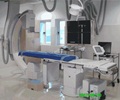Two studies comparing the use of manual chest compression vs. an automated chest compression device during resuscitation for out-of-hospital cardiac arrest produce contrasting findings
CHICAGO - Two studies comparing the use of manual chest compression vs. an automated chest compression device during resuscitation for out-of-hospital cardiac arrest produce contrasting findings, according to the studies in the June 14 issue of JAMA.
Out-of-hospital cardiac arrest claims hundreds of thousands of lives annually in North America. Successful resuscitation depends on a coordinated set of actions including early cardiopulmonary resuscitation (CPR), according to background information in the article. Observations of rescue personnel during CPR indicate that maintaining consistent chest compressions is a difficult task. The desire to provide optimal chest compressions led to the development of automated mechanical chest compression devices. The load-distributing band (LDB) is a circumferential chest compression device with an electrically activated constricting band on a short backboard and has been approved by the Food and Drug Administration for use in attempted resuscitation of cardiac arrest. Compared with manual chest compression, an automated LDB chest compression device produces greater blood flow to vital organs and may improve outcomes.Al Hallstrom, Ph.D., of the University of Washington, Seattle, and colleagues conducted a study to compare LDB-CPR with manual CPR during out-of-hospital cardiac arrest. The multicenter, randomized trial included 1,071 patients who experienced out-of-hospital cardiac arrest in the United States and Canada. Patients received either standard emergency medical services (EMS) care for cardiac arrest with a LDB-CPR device (n = 554) or manual CPR (n = 517). The primary outcome measure included survival to 4 hours after the 911 call, with secondary measures being survival to hospital discharge and neurological status among survivors.
There was no significant difference in survival at 4 hours after the 911 call between the manual CPR group and the automated LDB-CPR group overall (29.5 percent vs. 28.5 percent) or among the primary study population (24.7 percent vs. 26.4 percent). Survival to hospital discharge was lower in the LDB-CPR group among primary episodes (5.8 percent vs. 9.9 percent), as was survival with intact neurological status.
"As implemented in this study, the use of an automated LDB-CPR device for resuscitation from out-of-hospital cardiac arrest appeared to result in lower survival and worse neurological outcomes than traditional manual CPR. Device design and implementation strategies may need further preclinical evaluation. The results of this study underscore the complexity of resuscitation from out-of-hospital cardiac arrest. Further work is required to understand the interaction of manual or assisted chest compressions with other aspects of resuscitation such as the phase of the arrest, drug choice and dose, timing of defibrillation, and treatments such as hypothermia and coronary reperfusion," the authors conclude.











